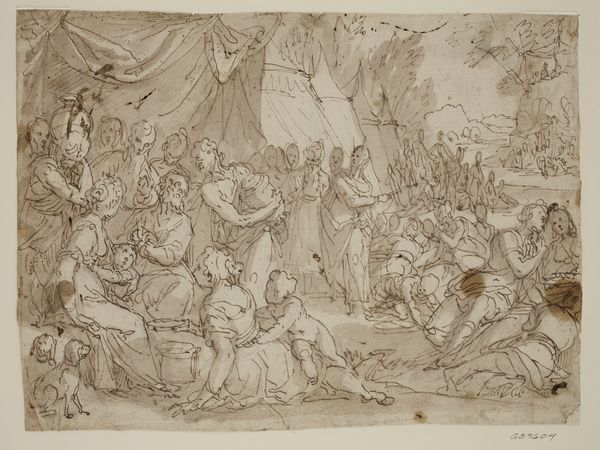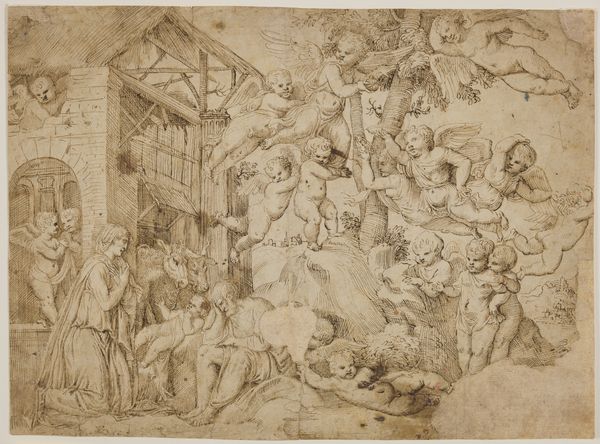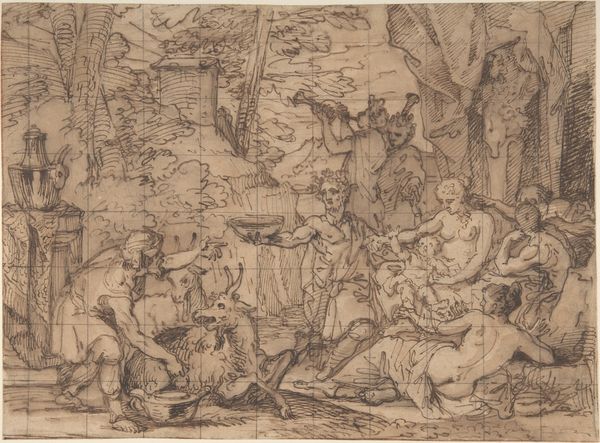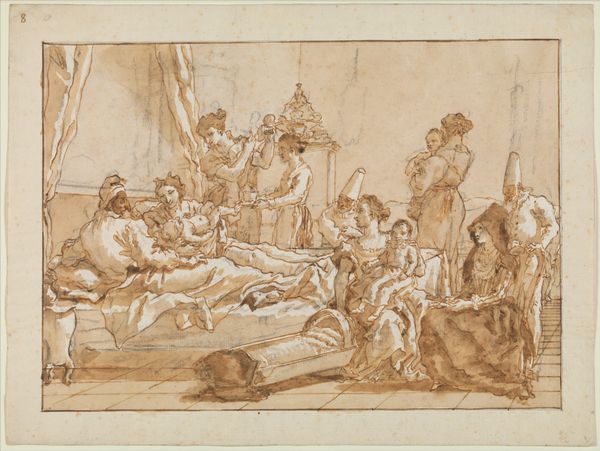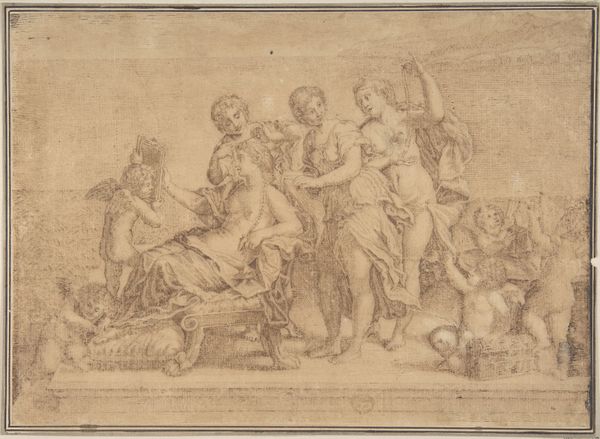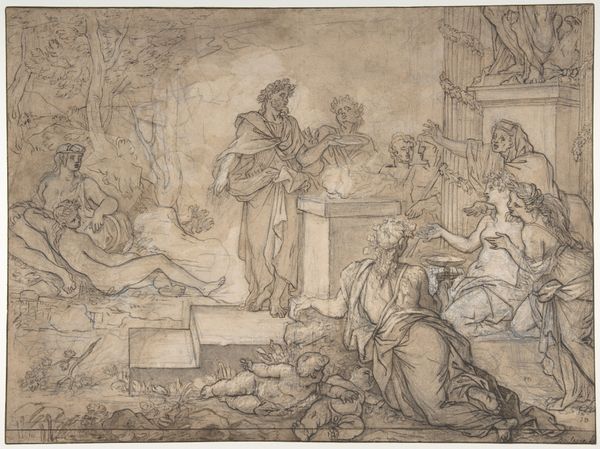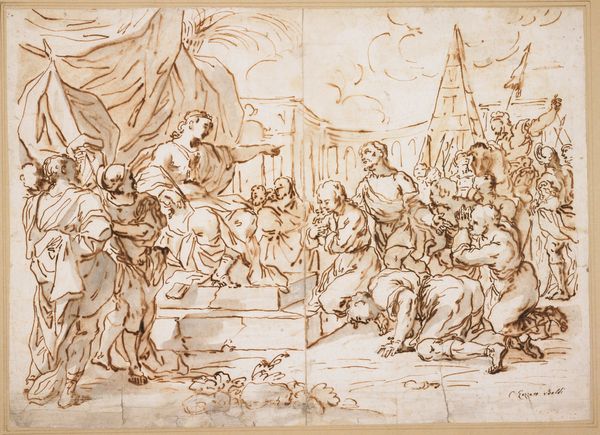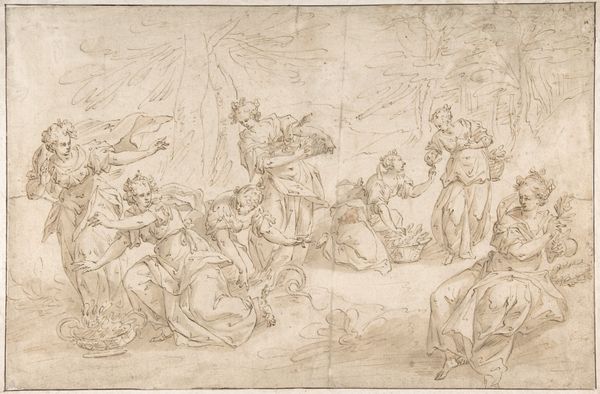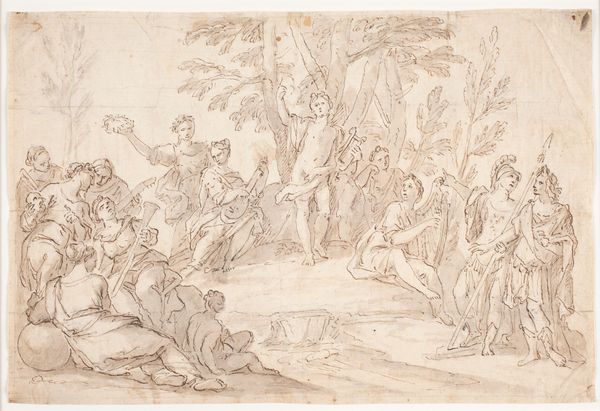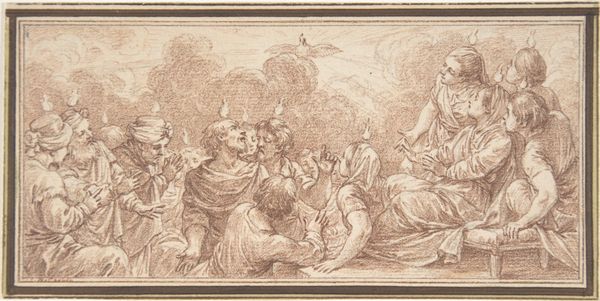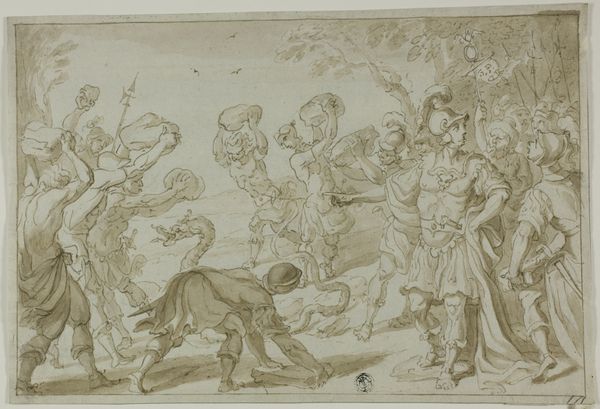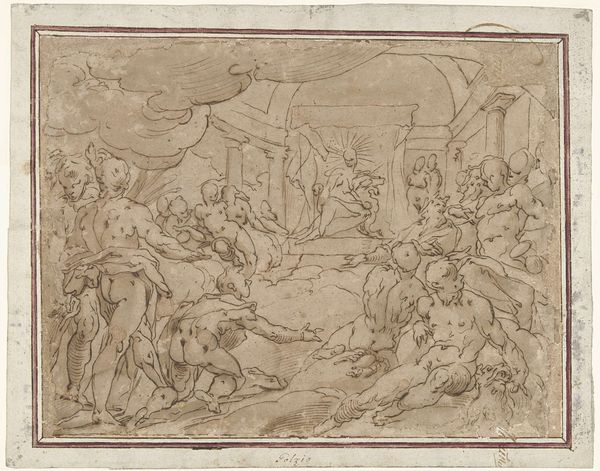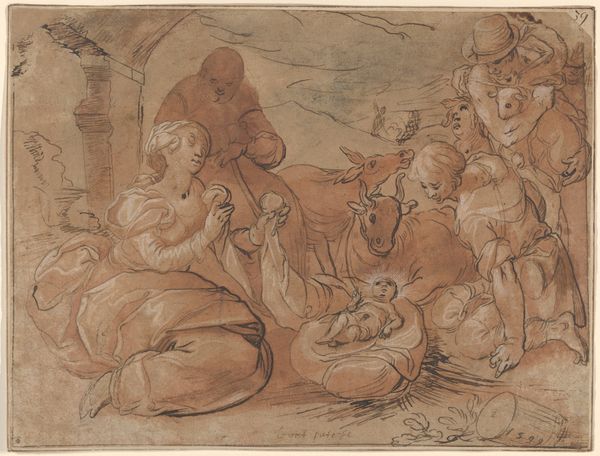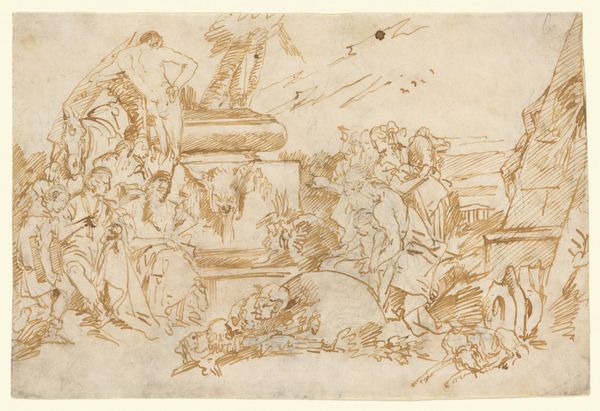
drawing, print, ink, pencil
#
drawing
# print
#
figuration
#
11_renaissance
#
ink
#
pencil
#
history-painting
#
northern-renaissance
Dimensions: 9 15/16 x 15 5/16 in. (25.2 x 38.9 cm)
Copyright: Public Domain
Editor: Jean Cousin the Younger’s “The Adoration of the Shepherds,” a drawing rendered in ink and pencil sometime between 1500 and 1565, depicts the classic biblical scene. What strikes me is how much detail there is – even in a sketch, every face seems so expressive. How would you interpret this work, considering its historical context? Curator: Well, considering the prevalence of such imagery, what role did the illustration of the Adoration play in shaping cultural understandings of the Nativity story during the Renaissance? Did these representations reinforce particular social or religious doctrines? Editor: That’s interesting, because the Renaissance was hardly unified in its beliefs or the art it patronized. Curator: Precisely. So, thinking about the Northern Renaissance context, how does the style, with its attention to detail and somewhat mannered figures, relate to artistic developments happening elsewhere in Europe, especially Italy? Editor: It does feel different from a lot of Italian Renaissance art I’ve seen. Maybe a bit…colder? Less focused on idealizing the human form? Curator: Indeed, and considering the presence of this drawing in a museum setting today, how do factors such as provenance and exhibition history influence our contemporary interpretation? Are we seeing what Cousin intended, or is our view colored by centuries of shifting values? Editor: I suppose the display choices and the curatorial narrative significantly shape what we, as viewers, take away from the work. Curator: Exactly. Also, why present religious subject matter in public spaces? This suggests the power of imagery as a form of communication during periods of conflict. It might even underscore how religious stories legitimized specific social structures. Food for thought! Editor: Definitely. I hadn't really considered how the drawing’s afterlife affects its meaning. Thanks, that gives me a lot to think about. Curator: My pleasure. Understanding art history means recognizing the ever-evolving relationship between a work and its audience across time.
Comments
No comments
Be the first to comment and join the conversation on the ultimate creative platform.
